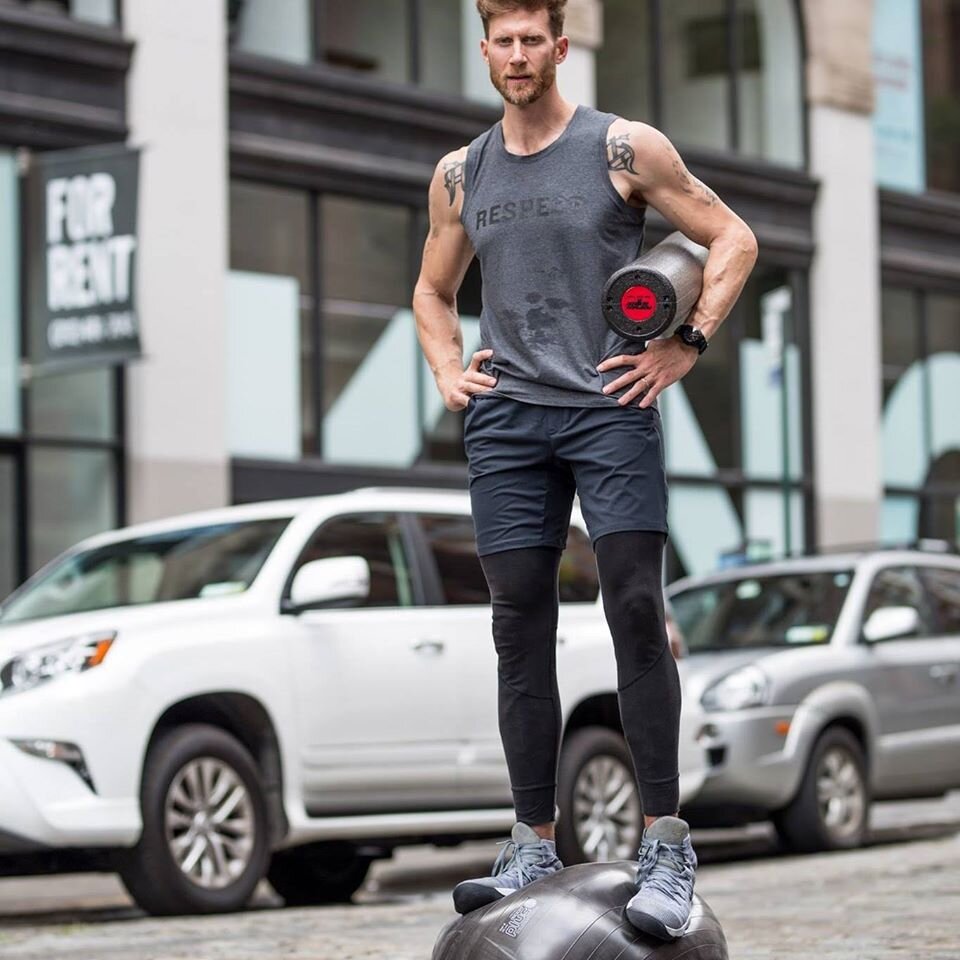Ask the ergonomist: How can I help employees set up a healthy, productive home office?
Venn partner Yoga Dan, an OSHA Certified Posture Specialist and founder of SPROGA, has helped employees at companies like WeWork, LinkedIn, Spotify and Cureatr customize their office work spaces up for optimal comfort, health and productivity. With the shift to at-home work, Yoga Dan now teaches office workers how to adapt their best workstation setup to their home environment. We asked Dan for some ergonomic guidance employers can share with their employees for long-term productivity and success in an at-home work area - here’s what he said.
When office workers began working from home earlier this year due to the pandemic, many of them didn’t realize how long this situation would last. As months rolled by, at-home workers had to accept that slouching into the couch with a laptop or sitting at the dining room table wasn’t going to cut it long term. Tech neck, back pain, low energy and other body ailments that come from disorganized posture emerge quickly.
Offering your employees guidance on how to create a healthy home office environment that prevents injury and burnout is an investment of time that will pay long-term dividends. What’s the best possible guidance that you as the employer can offer? Here are some tips.
Keep 3 things
As employees set-up their home work space, it's helpful to think about having 3 “necks” to accommodate:
Your Neck
Your Wrists
Your Ankles
Ergonomic tools to orientate.
For an optimal workstation I use and recommend this variety of ergonomic equipment to clients. Here are some of the best tools:
Wireless keyboard
Wireless mouse
Mouse trackpad
Venn Chair - Encourages active sitting, balance and movement
Venn Cushion - A seat to use during floor/non-traditional sitting that will keep anterior pelvic tilt
SPROGA Stand - Different heights give the ability to place laptops/monitor at the optimal height (included in Desktop Set-Up by SPROGA)
Yoga Block - Multiple uses, including different floor sitting positions as well as a bolster for extra height for a laptop or monitor. (included in Desktop Set-Up by SPROGA)
Buckle Strap (included in Desktop Set-Up by SPROGA) - for creating boundary on the thighs that keeps them parallel and pointed in front of you
Lumbar Support - a round cushion for placement between low back and a traditional chair (included in Desktop Set-Up by SPROGA)
Half Foam Roller - places under feet to encourage ankle movement and to ensure feet make contact with a surface (included in Desktop Set-Up by SPROGA)
MyDeskView - A portable, lightweight standing desk that gives you the ability to se-tup a standing desk at any wall or window at any height.
Arranging your workstation ergonomically.
As employees arrange their tools and themselves in their workstation, follow this ergonomic guidance.
Chair
Switch up your position between standing, active sitting and floor sitting as much as you can. The more you move, the better. I recommend active sitting on a Venn Air Chair, but if you find yourself seated in a traditional chair, keep these ideas in mind:
Utilize back support. Support the thoracco-lumbar area - the part of your back that curves inward. Extra support helps to re-establish the natural curve in the lumbar spine. Make sure the outward curve of the support and chair matches the inward curve of your back.
Back rest angle at a slight decline. A big misconception about chairs is that the back rest should always be straight. Recent research has shown 90 degree angle is not the most optimal. Slightly reclined posture is actually ideal. The decline should be between 95-115 degrees. Your spine always makes contact with the chair (This is the case for active sitting as well!)
Desk
Arm Rest. Should be an extension of the desk. Gives you support from elbow to wrist so that there is always contact.
Keyboard Angle. When typing, your wrists should be straight and the hands should be in line with the forearms. Your forearms should be on the desk.
Keyboard tray height. After setting up your chair, look at keyboard desk height. Optimal height can reduce likelihood of developing shoulder pain. Ideally, neutral resting height should be just higher than the keyboard/mouse. Elbows need to be higher than the wrist with the help of the arm rest. If you don’t have an arm rest then it is important for your elbows to be on the desk. You may need to lower or raise your desk height or keyboard height.
Monitor height. To help prevent neck pain, shoulder discomfort, eye strain and headaches you want the view of your monitor to be at the top ⅓ of the screen. If your monitor can tilt, tilt it upwards about 15 degrees. Monitor should be placed directly in front of you. If you have multiple screens they should converge directly in front of you. Distance should be one arm’s length.
Mouse position. Place mouse on the side of your dominant hand to free up the non-dominant hand to write notes. This means the mouse will be either left or right of you, never in the center. Switch it up from side to side and don't think of it as fixed - it can be utilized with both hands. Challenge yourself to use your non-dominant hand at least 5 minutes per day.
Using ergonomic equipment to keep moving while you work.
I recommend setting alarms throughout your day to remind yourself to take quick breaks to move. Here are some of my favorite moves with ergonomic equipment you can use to move and reset yourself:
Strap:
On the legs, use the strap to create a boundary on the thighs. Fold over with armpits to knees and feel the sensation in glutes, keep straight spine as you unfold. See how it feels with block between the legs. Practice sitting and standing with strap on the thighs.
On the arms, put arms up with strap buckle in the middle. Turn hands inwards. If the strap collapses, the buckle will be in the center. Feel the stretch and extension.
Block:
Use block with strap for standing and folding, sitting and folding.
Try bridge pose while pressing the block between your legs.
Dan Gottlieb aka Yoga Dan is Certified in Applied Functional Science, a Certified Posture Specialist and an OSHA® Certified ergonomist. He’s also the founder of SPROGA®, and an international yoga teacher based in NYC. He’s worked with companies like WeWork, Cureatr, Peleton and, Linkedin to optimize their work stations, and has provided instruction to NBA, NFL, NHL, and Gold Medal Olympic Athletes. Follow him on Instagram at @sproga_




